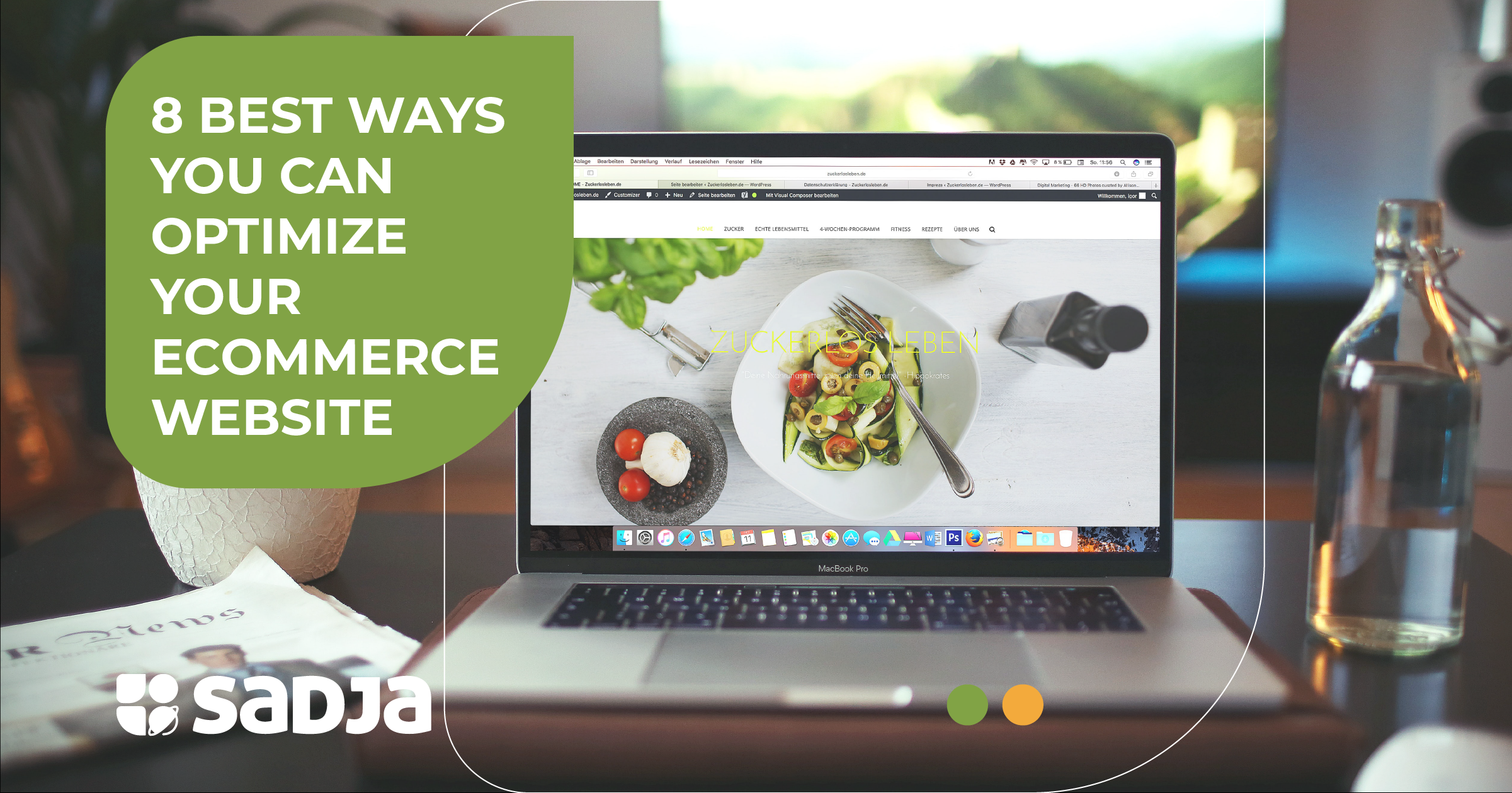8 Steps to Optimizing Your eCommerce Website
Now that you know why optimizing your eCommerce website is essential. But how do you optimize your eCommerce website? Well, here are eight steps you can follow.
1. Optimize Your eCommerce Homepage
When optimizing your eCommerce website, you need to use SEO efforts on your homepage. Your homepage should be optimized for users and search engines.
Optimizing your homepage for search engines increases your chances of appearing on SERPs.
Moreover, visitors who visit your homepage should have a clear view of your products. They should be able to see your products, prices, and descriptions in one glance.
Here are some strategies you can use:
Optimize the Meta Description, Title Tag, and Images on Your Homepage
Optimizing your title tag and meta description can achieve two crucial things. The first thing is your snippet in the SERP updates. The second thing is SERPs get to know what products your website is selling.
Moreover, your title and meta description will tell visitors what they expect to see once they click on your eCommerce website. But do not try to clickbait visitors with the wrong titles and meta descriptions.
Yes, click-baiting will increase your traffic, but the bounce-back rate will be high. Instead, focus on keeping your title tag under 60 characters. You can also include your brand or location. The meta description should also be under 155 characters. This will prevent SERPs from truncating it.
You need to optimize your images. You can resize them to improve loading speed. People tend to use their mobile phones more often. Hence, you can optimize your images for mobile phones.
Don’t forget to add alt texts in your images with keywords. This will help search engines know what the image is about when crawling. Hence, you will increase the chances of your product’s image appearing on SERPs when a visitor searches for a keyword related to your image.
Ease Navigation on Your Homepage
Your homepage is what customers will see once they visit your website. You need to give them the best experience by making everything navigable. This includes optimizing your information above the fold and any information on the page itself.
In the content above the fold, you can include your
– brand logo and color
– navigation bar
– search bar
– contact information
– cart
– call-to-action
– current promotions you are running.
First impressions matter. You need to make it easy for visitors to switch through various pages.
You can include your about us, products page, contact information, and cart in the navigation bar. You can even include a search bar to ease their time searching for a product.
2. Include CTAs Throughout Your Website
Believe it or not but people have the habit of needing to be told what to do. Hence, if you include the right call-to-action in your website, you will prompt your visitors to take the next step.
In turn, you will improve your visitor’s navigation experience. This relieves them of wondering where they should go or do next and increases conversions.
CTAs should contain verbs and keywords that will prompt your visitor to click on them. The simple rule is keeping everything simple. You can try various CTAs to know which ones visitors tend to click and those that have few clicks.
Moreover, you can play with the location of the CTA. Most CTAs tend to be at the bottom of the content, but you can try to place yours in the middle. Choose the right location depending on which one works better.
3. Optimize Your eCommerce Website for Mobile
Most people spend most of their time on mobile phones and tablets. Hence, you need to prioritize their experience with your website. You don’t want images to load too slowly or cover the whole screen. Such a website will turn away your visitors.
Moreover, you need to target keywords that will make you appear in search results. Mobile phone users tend to type fewer keywords than desktop keywords. Hence, you need to ensure you have some keywords that will make you pop up in their results.
You need to keep on testing your website’s content on different platforms. Ensure your visitors have a smooth experience using a computer, tablet, or smartphone.
You can begin by split-testing your website on mobiles. Then you can test individual elements to see how different they are on mobile.
4. Provide Your Business Contact Information
There are a lot of scammers out here, and customers are always at ease if they can find your contact information. Customers tend to trust you more if they can verify your contact information.
Most customers expect you to have your contact information on your website. Customers tend to verify your contacts before doing business with you. They may even contact you for assistance during the purchase. Hence, they may move on if there’s no contact available.
If a consumer considers purchasing from you, they get to know all about your business first. But, they are likely to look elsewhere if they can’t find adequate information about you. Hence, every business needs an up to date contact information.
You need to leave as much contact information as possible. You can include your
– office location
– business numbers
– emails
– addresses
– social media sites.
Whatever you choose, you need to provide as much detail as possible.
5. Create a Personalized Experience for Your Customers
Customers these days expect personalized shopping suggestions from eCommerce websites. Hence, you can use a customer’s previous purchases and browsing history. You can then display to them products that might be of interest.
Moreover, most shoppers forget they have added items to their carts. Hence, you can send alerts to customers of items in their abandoned carts. You can also upsell products from previous purchases.
Furthermore, you can show items related to what they’ve looked at. This strategy might prompt them to buy or consider buying the product. 34% of shoppers are likelier to make an unplanned purchase after a personalized experience.
You can even take your customer’s personalized experience further using a LiveChat feature. Research shows that eCommerce sites that use live chat see a 40% increase in conversion rates.
– Communicate with your website visitors in real-time to
– Suggest the best products
– Upsell
– Increase average order value
Moreover, a personalized shopping experience can increase a customer’s lifetime value and engagement. It might even lead to additional purchases. Customers who are pleased with their shopping experience are more likely to return.
6. Feature Your Best Products
Even if most of your products reside on internal product pages, you can highlight your best products on the homepage. Putting your best products on display gives customers an instant idea of what to buy.
Moreover, customers tend to look for items other people have bought. Hence, displaying all of your best sellers increases your chances of customers buying from you. And even if they don’t buy the exact item, they may purchase other best sellers.
You can test which products perform best on the homepage over time. You could also experiment with displaying
– seasonal products
– new products
– best-sellers
7. Display All Security Features Related to Your eCommerce Website
Hacking and identity fraud are prevalent, and online shoppers want to know that their information will be safe. Hence, visitors will be more likely to buy from you if you prove that your website is secure.
You can display trust seals and badges that are recognized on your homepage. Then, you can connect these badges and seals to your security provider. You can even place them in your footer. This will help your visitors to conduct their research.
Moreover, you’ll need to obtain an SSL certificate if you don’t already have one. Otherwise, search engines will mark your eCommerce website as “insecure.” Search engines may not even display it.
Any sign of an insecure website creates a negative first impression. Nobody wants to give their credit card information to an insecure website. Customers might turn away for good. Get an SSL certificate to reassure shoppers that their information is secure.
8. Promote Sales on Your Website
There is nothing better than a good deal. It is the easiest way to attract customers. Hence, you can put any current sales offers on your eCommerce homepage. You can even include a clearly labeled section leading to the sale.
Most eCommerce businesses thrive from promotional sales. Customers flock to websites where they can find an item for a lesser price. Hence, you need to offer better promotional sales than your competitor.
Take the example of Jumia and its offers. Jumia releases several offers like Black Friday, anniversary sales, and flash sales. Jumia even provides discount codes to influencers that you can use to get discounts. Jumia then displays each sale in its section.
How to Get Started On Optimizing Your eCommerce Website
I hope you have an idea of everything now that the hard part is out of our way. Here are three steps you can take to start optimizing your eCommerce Website. You can use these steps if you don’t know where to start.
1. Conduct or benchmark what other competitor eCommerce websites are doing
2. Identify some of the best strategies you can implement for your website
3. Test different strategies until you get the best ones



